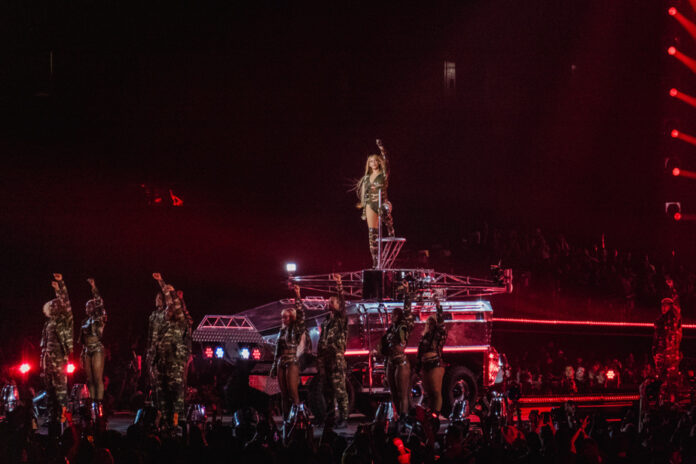If all concert films are not necessarily relevant, Beyoncé was able to give her Renaissance tour a higher intention by creating a feature film which not only allows us to marvel at this legendary spectacle, but also opens a window on the artistic vision , protester and human of the artist.
Everything is there. The film first shows us the concert from an angle to which no spectator could have had access. He also shows us behind the scenes of the production of this larger-than-life tour. It finally gives us access to Beyoncé’s approach, her reflections, her ambition, her vulnerability and her strength, as an artist and as a woman.
We attended one of the concerts in Toronto last summer and the film allowed us to discover elements of the show that had escaped us at Rogers Arena. We have a privileged view of its costumes, its choreography, its decor, its staging. Because it is filmed during several performances, we have access to the best of the show, including the participation of Kendrick Lamar, Megan Thee Stallion, Diana Ross and Blue Ivy (the daughter of Beyoncé and Jay Z). Some shots even seem to have been taken outside of concerts, they are so clear and tightly framed.
The attention Beyoncé puts into crafting her performance is inspiring, especially when you get the chance to see it up close. We can feel to what extent the artist is involved in the colossal work that represents the creation of these two and a half hours of concert during which so much happens.
This show and this film is her. But Beyoncé wanted to highlight the team around her. We understand a little better the extent of the work of the technicians and dancers who accompany him on stage. We learn how the show was built, over a period of four years, both on a practical level and on an artistic level.
And then, the film Renaissance allows spectators to see a little of Beyoncé in her personal space. In his own words, of course, but from a perspective that feels authentic. By showing herself vulnerable, she shows that even “Queen Bey” is human, which we perhaps sometimes forget. She expresses the fact that she is a mother above all. Let her suffer for her art. That everything is a little more difficult when you are a black woman, even when you are Beyoncé. That she feels more free and at peace than ever, at 40 years old and 27 years in her career later. That she had a clear ambition for the Renaissance album and tour: to celebrate black culture and queer culture.
The extraordinary cultural contribution of black and queer communities occupies more and more space in our “mainstream” space. But we should not be fooled: their marginality remains and their existence is still often rejected. Not everyone agrees with the fact that she has integrated into her work the codes of a queer culture which is not a priori hers. This view is equally valid.
One of the people dancing in the Renaissance show puts it well (we’re paraphrasing here): Beyoncé is a vehicle for creating a grandiose space for these voices that some would (wrongly) prefer not to hear. The Renaissance concert screams this African-American identity, it screams this queer identity, and it screams them in a pop language intelligible to a large number of people.
You have to see the images on social networks of packed cinemas in which admirers scream to their favorite songs, sway their hips as if they were in a ballroom and are moved by the work presented Beyonce. The film, which will bring millions to the artist, it goes without saying, is not just a commercial object. It is also a way of expressing very strongly (and in a very beautiful way) demands which, now on the big screen, will be able to reach even more people.
Renaissance is a celebration. Through celebration, it becomes revenge. Renaissance is emancipation. A takeover. It is also a eulogy to the beauty of bodies, to community, to the power of fashion, to female sexuality, to hypersexuality itself, at its most uninhibited and emancipatory.
Once again, Beyoncé has created a popular object that has the power to take an unparalleled place in cultural space. The place we give to art that conveys something great and important.















